Things to do in Isfahan (Photos, Address, Timing)
Isfahan is one of the most beautiful cities in Iran and one of the most important tourist destinations for Iranians and foreign tourists due to its tourist attractions and historical monuments left from various eras, especially the Safavid Empire era. The historical city of Isfahan is a mixture of the art and architecture of ancient Iran and the Middle centuries. You will witness the splendor of Iranian art and taste in every part of the city. The city of Isfahan has special beauties, that is why this city is called Esfahan Nesf-e Jahan (half of the world). Isfahan, a city with blue tiles and fine arts, attracts everyone. If we want to write about the things to do Isfahan, several pages of the article will definitely not be enough, but in this article, we will introduce you to some of the most popular and famous sights of Isfahan, so stay with us until the end of this article.
Why Visit Isfahan?
- It is one of the top 5 tourist cities in Iran.
- You can visit unique Isfahan historical places such as Naghsh-e Jahan Square, Sheikh Lotfollah Mosque, Chehel Sotoun Palace, Grand Bazaar Of Isfahan, Vank Cathedral, etc. in this city.
- Some of the most important and beautiful bridges of Iran, such as Si-o-se-pol and Khaju Bridge, are located in this city.
- Apart from the famous historical attractions, interesting sights such as the Isfahan Music Museum, Isfahan Aquarium, Armenian Quarter, Chaharbagh Street, etc. make sightseeing in this city more enjoyable.
- By traveling to Isfahan, you can have a memorable trip to one of the most important periods in Iran’s history, the Safavid period, by visiting the historical context and famous attractions of the city.
- A trip to Isfahan is considered a trip to the handicraft capital of Iran. By choosing Isfahan as your travel destination, you can get to know this part of Iranian culture.

How Many Days Is Enough in Isfahan?
There are so many attractions and historical monuments in Isfahan that you may need several weeks to visit them completely! However, a full visit to this enchanting city usually requires at least three to four days.
This time frame allows you to explore the most important historical and cultural places, including Imam Square, stunning mosques, the Grand Bazaar, and beautiful bridges.
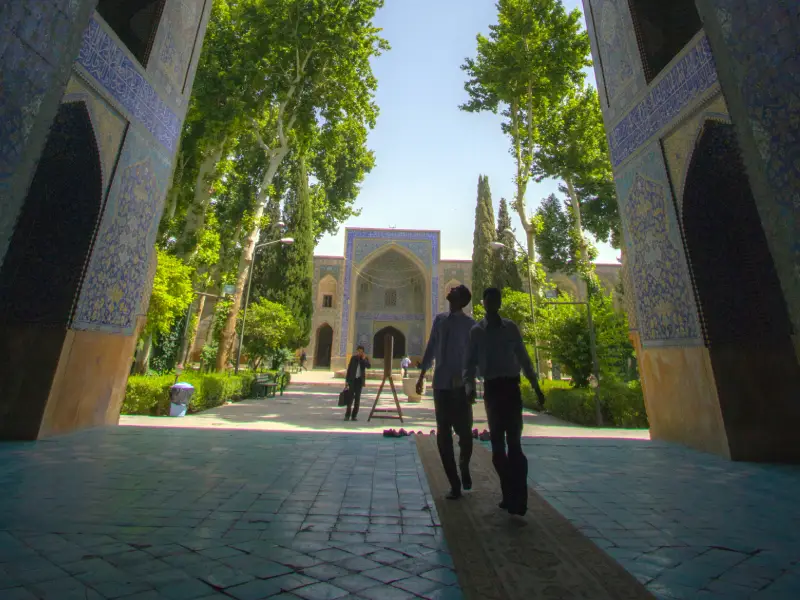
It also provides the flexibility to get to know the local atmosphere, sample delicious Iranian cuisine, and interact with warm and friendly locals.
If you have more time, extending your stay to five or six days can help you explore more deeply the culture and beauty of Isfahan and nearby attractions, such as Abyaneh village and Kashan.
Finally, the more time you spend in Isfahan, the more you will understand its history and beauty and guarantee a truly unforgettable experience.
Free Things to Do in Isfahan
Exploring the beautiful city of Isfahan does not need to cost a fortune, as there are several free activities and attractions that allow visitors to experience the city’s charm without spending a fortune.
Begin your day with a leisurely stroll around the iconic Imam Square (Naghsh-e Jahan), admiring its grandeur, historic significance, and the stunning mosques that surround it.
You can also enjoy the architectural wonders of the city’s many bridges, such as Si-o-se-pol and Khaju Bridge while enjoying the peaceful views of the Zayandeh River.
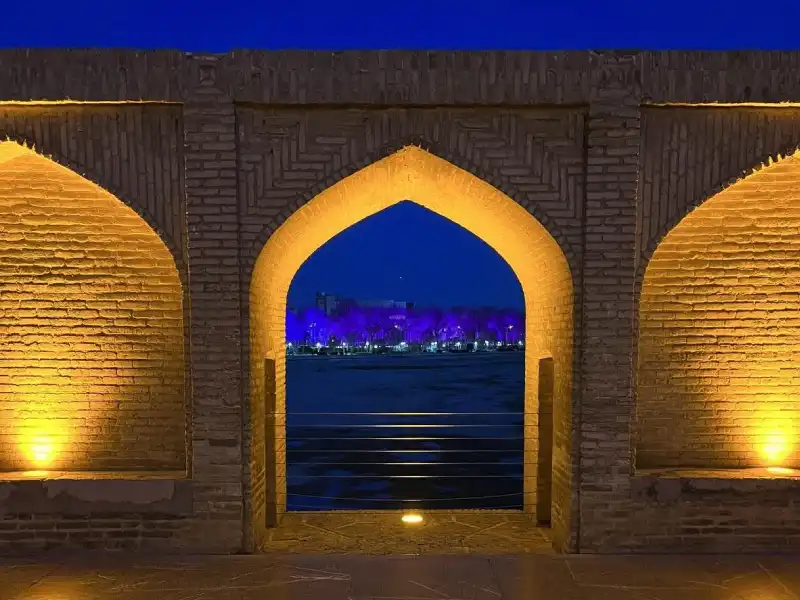
Do not miss the chance to explore the charming Armenian Quarter, known for its unique red mud-brick houses and beautiful streets.
Additionally, exploring the local bazaars and markets, like the Grand Bazaar, offers an opportunity to experience the vibrant atmosphere and observe daily life, all without spending a single dollar.
Lastly, visiting the city’s parks and gardens, like Mount Soffeh and Nazhan Park, provides a relaxing escape into nature, ideal for picnics or walks, making Isfahan an attractive destination for travelers on a budget.
Naghsh-e Jahan Square (Imam Square)
Naghsh-e Jahan Square is one of the largest squares in the world and one of the most important tourist places in Isfahan.
Around this square, there are traditional markets and historical buildings such as Sheikh Lotfollah Mosque, Ali Qapu Palace, Imam Mosque, and Qeysarie Bazaar. Enjoyable horse-drawn carriage rides are available here, allowing you to experience them alongside visits to historical sites and shopping in the traditional market of Naghsh-e Jahan Square.
Additionally, gaining familiarity with the souvenirs and handicrafts of Isfahan province can serve as your guide in your shopping ventures.
Visiting hours for Naghsh-e Jahan Square: It is open day and night.
Address: Isfahan, north of Isfahan city, west of Hafez Street
Si-o-Se Pol Bridge of Isfahan
The “Si-o-Se Pol” is one of the iconic symbols of Isfahan and among its most important landmarks. This historical bridge, whose foundations are slowly deteriorating, has lost some of its grandeur over time but remains a stunning and fascinating sight.
This bridge was built during the reign of Shah Abbas. The Si o Se Pol Bridge was intended to be an eternal symbol of Isfahan.
Throughout history, this bridge has hosted numerous celebrations and important events, including the Ab-Pashan (water festival), Nowruz (Persian New Year), and Khaj Shoyan gatherings, which have brought people together for camaraderie and joy.
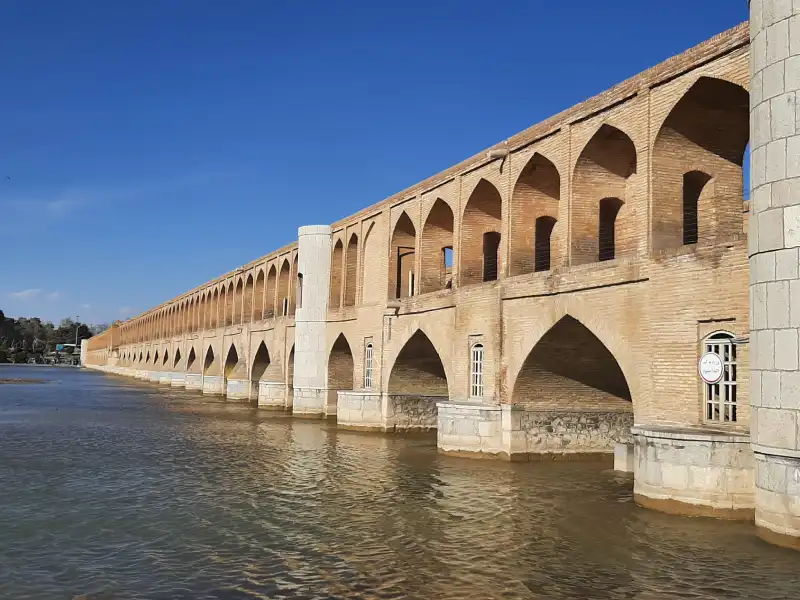
With 33 arches, a length of 295 meters, and a width of 14 meters, the Si-o-Se Pol Bridge is an architectural marvel of their time, sparking various opinions and discussions.
This structure is registered as a national monument of Iran. Visit the Si-o-Se Pol Bridge and witness its beauty, especially at night when the illuminations add to their grandeur and make an unforgettable memory.
Address: Located 1800 meters away from Khaju Bridge.
Visiting Hours: Open day and night.
Khaju Bridge
This beautiful bridge was built during the reign of Shah Abbas II and is considered one of the architectural wonders of its time.
Khaju Bridge features a symmetrical design and spans across the Zayanderud River. It served practical purposes, such as damming and regulating the river’s flow, and has remained stable throughout history.

In the middle of this bridge, a small building with simple yet regal decorations was constructed for the royal family to use. The view of the Zayanderud River from the top of the bridge is peaceful and delightful, and the reflection of the sky and the bridge in the heart of the river is truly unique.
If you visit this place, especially during sunset, you can witness one of the most beautiful sights in Isfahan.
Address: Southern end of Chaharbagh-e Khaju and the eastern end of Kamal al-Din Isfahani Street.
Visiting Hours: Open day and night.
Things to Do in Isfahan
Here are the list of Isfahan tourist Attractions:
Ali Qapu Palace
Ali Qapu Palace is a six-story building standing 48 meters high, with its floors interconnected by spiral staircases.
Constructed during the Safavid era on the western side of Imam Square, it was initially commissioned by Shah Abbas I and later completed during the reigns of Shah Abbas II and Shah Suleiman.
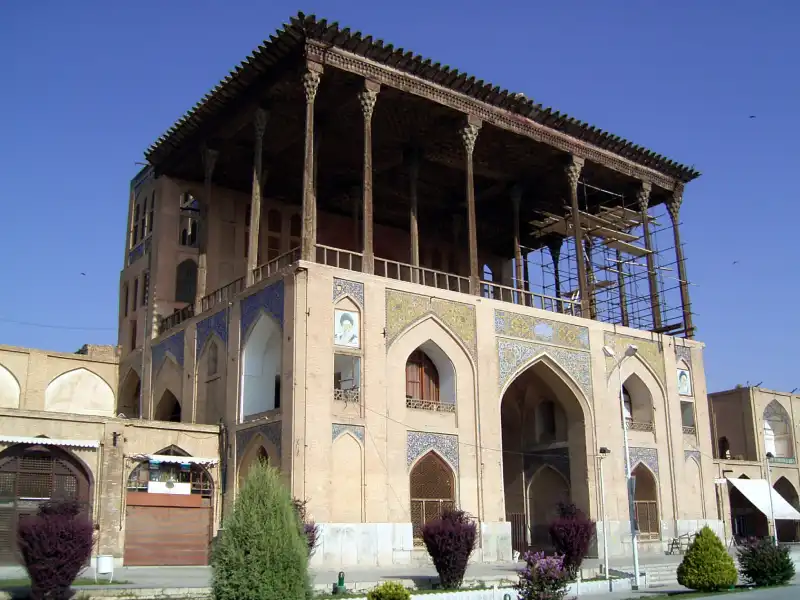
An interesting aspect of this Isfahan attraction, Aali Qapu, is that the number of floors appears different from various angles. When viewed from the front, it seems to have two floors, from the side, three floors, and from behind, five floors. However, in reality, Aali Qapu has six floors.
Aali Qapu Palace Address: Imam Square, Western side, Isfahan
Visiting Hours: 9:00 AM to 6:00 PM
Imam Mosque
The Shah Mosque or Imam Mosque, was built during the Safavid era under the orders of Shah Abbas I. This mosque is one of Isfahan’s top attractions and is listed as a UNESCO World Heritage Site alongside Naghsh-e Jahan Square.
Its breathtaking beauty is mainly attributed to the extraordinary architecture, tilework, and exceptional woodwork that was employed in its construction.
The Jameh Mosque is a unique example of Iranian-Islamic architecture, adorned with Islamic patterns and calligraphy crafted by renowned calligraphers such as Alireza Abbasi.
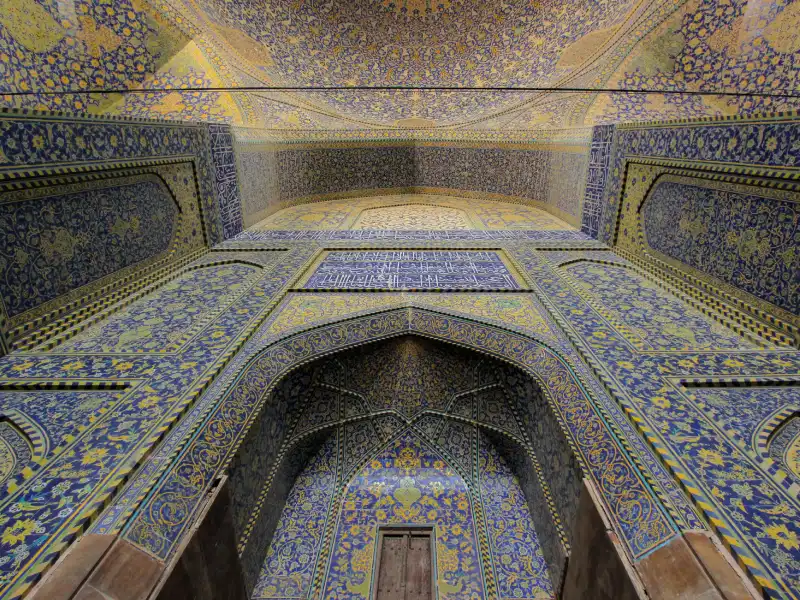
An interesting fact about this mosque is that if you stand in the center of the mosque’s dome chamber and speak, your voice can be heard throughout the entire mosque courtyard.
Address: Isfahan, south side of Naghsh-e Jahan Square.
Visiting Hours: In the first half of the year, from 9 AM to 12 PM, and in the second half of the year, from 2 PM to 5 PM.
Entrance Fee: 50,000 Iranian rials for domestic tourists and 500,000 Iranian rials for foreign tourists.
The Jameh Mosque
The Jameh Mosque of Isfahan, also known as the Atiq Jame Mosque, covers an area of approximately 21,000 square meters.
Its historical origins date back to the Seljuk period. This mosque is listed as both a national monument of Iran and a UNESCO World Heritage Site.
The complex boasts 484 domes, both large and small, each adorned with distinct designs. Among the various sections of the mosque, you can find the Shabestan (prayer hall), the Taj al-Molk Dome, the Nezam al-Molk Dome, as well as the chambers of Dervishes, Sahib, Ustaad, Shagird, and Omar.
There are also the mosques and the Mehrab al-Jayto, the winter Shabestan of Bit al-Shata, and the Khajeh Nezam al-Molk Library.
Address: Isfahan, Qiyam Square, Allameh Majlesi Street.
Visiting Hours: from 9 AM to 11 AM and 1 PM to 4 PM.
Entrance Fee: 50,000 Iranian rials for domestic tourists and 500,000 Iranian rials for foreign tourists.
Sheikh Lotfollah Mosque
Sheikh Lotfollah Mosque is adorned with exquisite tilework and has exceptional architecture. This beautiful mosque, constructed during the Safavid period, shines with its distinctive turquoise dome on Naghsh-e Jahan Square. Other notable features of Sheikh Lotfollah Mosque include its impressive 28-meter-long entrance corridor, the Mehrab (prayer niche), an underground corridor, special lighting, the main Shabestan (prayer hall), the magnificent dome, inscriptions and calligraphy within the mosque, and a unique sevenfold echo phenomenon. What sets this mosque apart from others in Iran is its lack of minarets and its four-iwan courtyard.
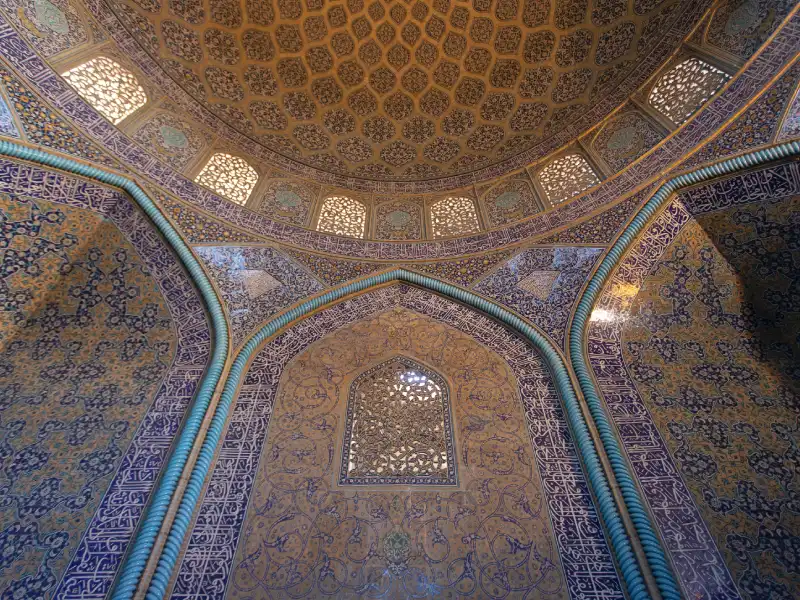
Address: Isfahan, the eastern side of Naghsh-e Jahan Square.
Visiting Hours: In the first half of the year, open from 9 AM to 12:30 PM and 2 PM to 5 PM. In the second half of the year, open from 9 AM to 11:30 AM and 1 PM to 4:30 PM.
Entrance Fee: 50,000 Iranian rials.
Sheikh Bahai Bathhouse (Shaykh Bahai Hammam)
We arrive at another mysterious place in Isfahan – the Sheikh Bahai Bathhouse. This large and mysterious bathhouse used to heat all its water with just one flame. Sadly, that flame has now gone out.
During the Safavid era, this bathhouse was designed by the great scholar Sheikh Bahai. Some attribute the extinguishing of the flame to carelessness during experiments.
The architecture of this bathhouse is typical of public bathhouses in Iran, with its unique feature being the method of heating the bath.
Address: Abdul Razzaq Street, Isfahan, Sheikh Bahai Alley.
Vank Cathedral
Vank Cathedral is one of the must-visit places in Isfahan, intertwined with the city’s history. Built during the reign of Shah Abbas II to accommodate the Armenian community, it is the heart of the Jolfa neighborhood.
Vank Cathedral is a blend of Armenian and Islamic architectural styles, with a striking dome that stands proudly above it. The entire church is full of breathtaking beauties that will make your eyes sparkle when you see each of them.
This building, which is still active and is a center for worship and performing religious acts, has a magnificent museum next to it.
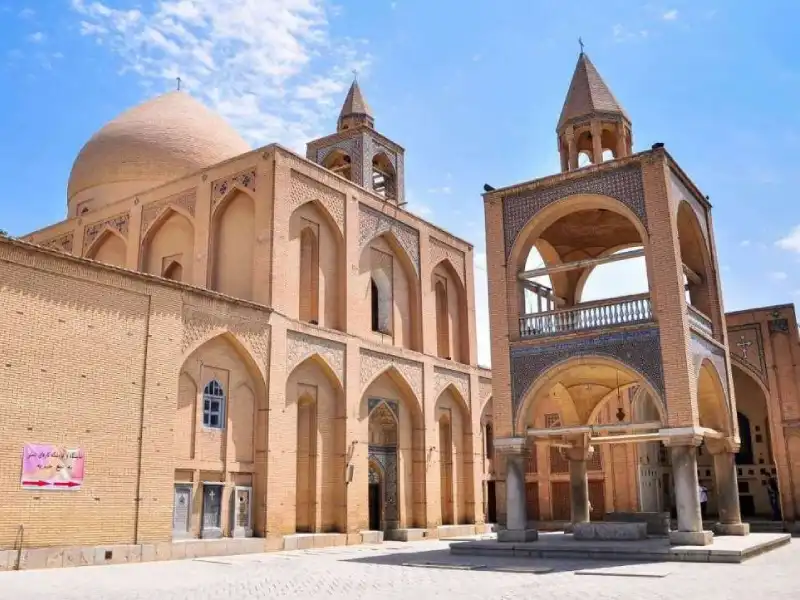
The Vank Cathedral Museum preserves valuable artifacts, each with a rich history. One of the most famous pieces is an intricately detailed tilework that features a passage from the Torah, which you can view through a microscope.
Words fall short of describing the beauty of this complex. You must visit Isfahan and experience Vank Cathedral up close. Do not forget to explore the famous and special cafes in the Jolfa neighborhood during your tour.
Address: Jolfa neighborhood, Eastern Nazar Street, Vank Cathedral Alley.
Visiting Hours: Daily from 8:30 AM to 1:30 PM and from 4:00 PM to 6:30 PM.
Entrance Fee: 150,000 Iranian rials for domestic tourists and 500,000 Iranian rials for foreign tourists.
Monar Jonban
Many tourists are familiar with the historic and ancient structure known as Monar Jonban. Monar Jonban is another attraction in the city of Isfahan, built in the year 716 AH. It is the resting place of a revered mystic named “Amoo Abdullah Karladani.”
One unique feature of this historic site is its name, which means “shaking minarets” in Persian. If you push one minaret, the other minaret starts swaying as well, giving it the name “Monar Jonban.”
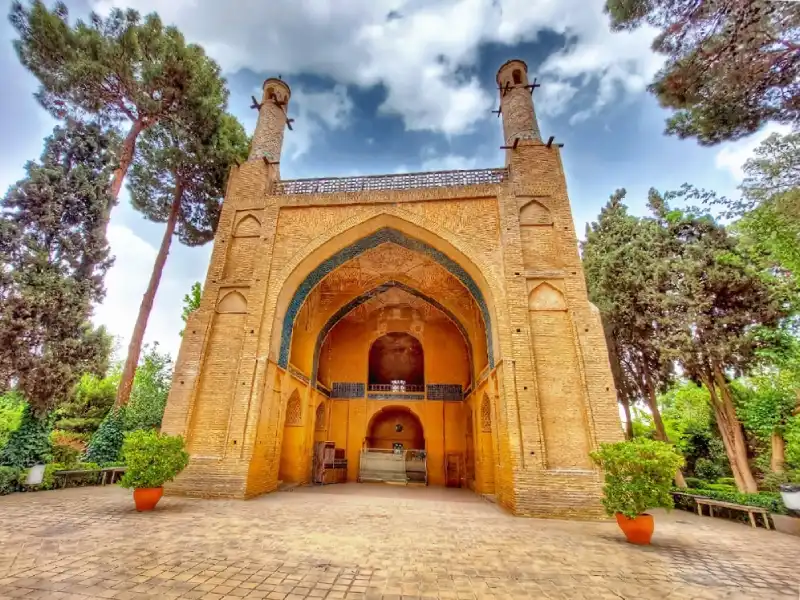
Another interesting fact is that each minaret has a width of 9 meters and a height of 17 meters. When you visit Isfahan, be sure to make a stop at this special and strange structure!
Address: 6 kilometers on the road from Isfahan to Najafabad.
Visiting Hours: 9 AM to 6 PM.
Entrance Fee: 50,000 Iranian rials.
Chehel Sotoun Palace
The Chehel Sotoun Palace is a perfect example of a royal and magnificent garden that dates back to the Safavid era. The interesting thing to note about this garden is that it once had a direct connection to other gardens, leading to the heart of the city, Naqsh-e Jahan Square.
Inside this garden, you will discover a museum filled with amazing paintings, each of which tells a story of one of the historical events of that time.

To go to Chehelston Garden, we suggest spring or summer to enjoy nature and also the beauty of the building’s architecture in the cool and comfortable air.
Address: East of Chaharbagh Paeen Street, South of Sepah Street, and West of Naqsh-e Jahan Square.
Visiting Hours: from 9 AM to 5 PM, except on special holidays.
Entrance Fee: 500,000 Iranian rials for foreign tourists.
Chaharbagh School
Chaharbagh School, named after its four iwans (vaulted halls), is one of the most amazing attractions in Isfahan. Also known as Madrese-ye Madar-e Shah, it is the last structure built during the Safavid era.
This building has complete beauty with all its impressive features, from its intricate tilework and mosaics to the detailed designs adorning both its exterior and interior, creating a lasting impression.
After renovations, Chaharbagh School reopened in September 1941, and in 1946, it was transformed into the Cultural Library.
Address: Chaharbagh Street – Chaharbagh School.
Visiting Hours: 9:00 AM – 5:00 PM.
Final Word
Isfahan is undoubtedly a city that will fascinate you, and besides exploring its ancient wonders, you will also be enchanted by its beautiful and green natural scenery. To make your trip to Isfahan an unforgettable memory, it is highly recommended to plan a few days stay in this charming city.
Whether you are a history enthusiast, an admirer of architectural marvels, a nature lover, or simply seeking relaxation, Isfahan tourism has something to offer for everyone. So be sure to include Isfahan in your itinerary and experience the diverse aspects of this stunning city, where every corner reveals its rich heritage.
Are you planning to travel to Iran and looking for an Iran resort? Consider Matinabad eco resort.

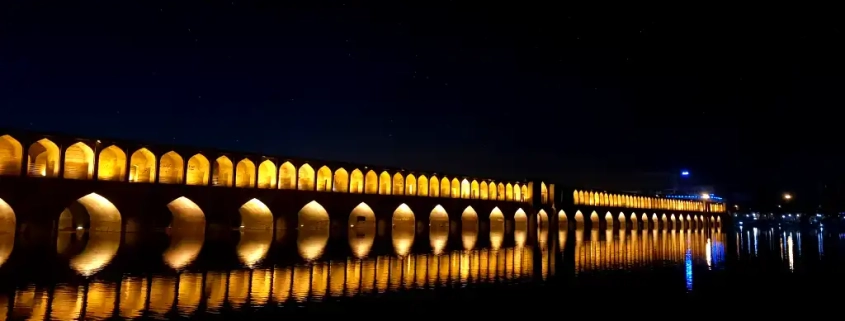



Leave a Reply
Want to join the discussion?Feel free to contribute!